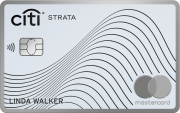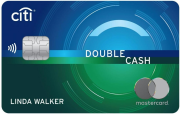The content on this page is accurate as of the posting date; however, some of the offers mentioned may have expired.

Keeping your credit card safe is harder than you think. Security threats lurk at every corner, and if you happen to be one of the millions that take your credit card online for purchasing, your security is compromised with every click.
In order to protect your credit card, it’s important to know all the potential threats. Whether it be phishing or smishing, staying abreast of the biggest security threats will keep your money safe. Right now some of the biggest security threats to your credit card are text message scams called smishing, impostor phone calls, Internet phishing schemes, and skimming devices that read and store your card information. Here are the biggest threats:
Skimming. Skimming is when a scammer gets a hold of your credit card and proceeds to record the card number as well as payment information embedded on the magnetic stripe. Skimmers use an exterior hardware to acquire the information. Skimmers usually get your personal information from faulty ATMs or restaurant employees who skim your card when you give the card up for payment. When at an ATM and you suspect it hosts a skimming device, beware because a small camera might be close as well. This small camera is usually there to record your PIN numbers. It can be hard to avoid a skimming situation, but you can protect yourself a little more by paying attention to the pictures that the banks post of their credit card slots on an ATM. If the slot looks different than the picture, then don’t take your chances, as it may be hosting a skimming device. Also, pay with cash when at bars, restaurants, or anywhere you have to part with your credit card for a period of time.
Phishing. Millions of consumers fall victim to phishing schemes every year. Phishing is the art of getting consumer passwords, usernames, credit card information, and other personal data over the Internet or any other electronic means of communication. The hacker usually pretends to be a trustworthy partner, and cons the consumer into giving over their personal information. The most common tricks use e-mail or websites that claim to be online payment systems, sweepstakes, social networking sites, and auction sites. In addition to e-mail and web presence, phishers also contact consumers by instant messaging. Large and small companies can fall victim to phising schemes, just this year, websites like Sony, Google and Netflix have been victims of phishing schemes.
Smishing. Smishing is the newest type of security threat, and if refers to hacking methods through text messaging mediums. There has been an increase in these types of crimes. The latest scandal involved fake employees sending out text messages telling consumers that their Wells Fargo account had been compromised. Consumers were then instructed to call a number, where a voicemail told them to press 1. Then a fraudulent agent came on the phone and asked for the consumers’ sensitive bank information. Banks don’t usually send out mass text messages; consumers can avoid this type of scam by always calling the number on the back of their card if there are any issues with their account.
Credit cards are at constant risk. In order to keep it secure, watch out for these basic types of security threats.





